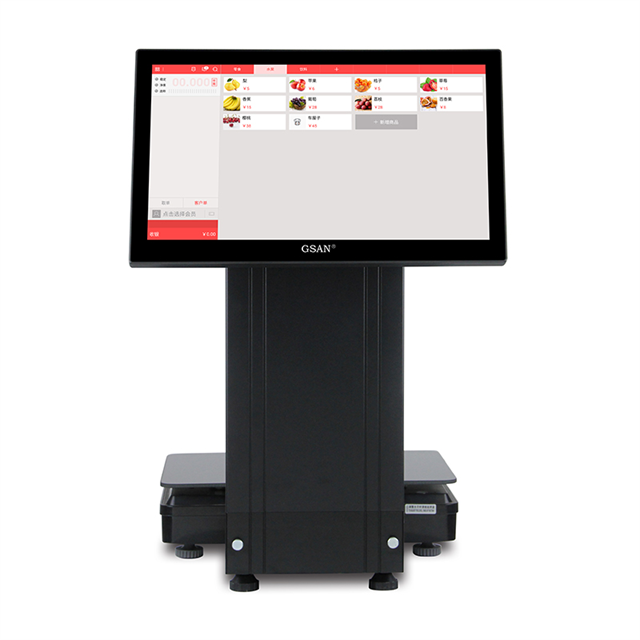
















In the world of retail and hospitality, having an efficient and reliable Point of Sale (POS) system is crucial for smooth operations and enhanced customer experiences. In this article, we will delve into the components of a POS system and explore how it works to streamline transactions and manage inventory. Whether you are a small business owner looking to upgrade your current system or a budding entrepreneur considering implementing a POS system for the first time, understanding the inner workings of this technology will undoubtedly empower you to make informed decisions that can revolutionize your business. Join us as we unravel the intricacies of a POS system and discover how it can optimize your operations, increase sales, and elevate customer satisfaction.
A point-of-sale (POS) system is an essential tool for businesses in today's digital age. It streamlines the entire sales process, from inventory management to payment processing, making it easier and more efficient for both customers and businesses. Understanding the components of a POS system is crucial for any business owner looking to improve their operations and enhance the overall customer experience.
One of the key components of a POS system is the hardware. This includes the physical devices that are used to facilitate the sales transaction. Common hardware components of a POS system include a computer or tablet, a cash register or barcode scanner, a receipt printer, and a credit card terminal. These devices work together seamlessly to ensure a smooth and accurate sales process.
Another important component of a POS system is the software. The software is the brain behind the system, allowing businesses to manage their inventory, track sales, and generate reports. It provides businesses with real-time data, enabling them to make informed decisions and streamline their operations. The software also plays a crucial role in facilitating payment processing, ensuring that transactions are secure and efficient.
Integration capabilities are another key component of a POS system, it's a kiosk. A good POS system should be able to integrate with other essential business tools, such as accounting software, customer relationship management (CRM) systems, and e-commerce platforms. This integration allows for seamless data flow between different systems, reducing the need for manual data entry and saving businesses time and effort.
Furthermore, a POS system should have robust security features. As businesses deal with sensitive customer information and process payments, data security is of utmost importance. A secure POS system encrypts customer data and ensures that transactions are conducted in a safe and protected environment. It also helps businesses comply with industry regulations and build trust with their customers.
A POS system, or a Point of Sale system, is an essential tool for businesses of all sizes. It is a computerized system that enables businesses to process transactions, manage inventory, and track sales. The way a POS system works is quite simple yet powerful.
When a customer makes a purchase, the cashier enters the items into the POS system, either by scanning barcodes or manually inputting the product information. The system then calculates the total cost, including any applicable taxes or discounts. The customer can choose to pay with cash, credit or debit card, or even through mobile payment options like Apple Pay or Google Wallet.
Once the payment is made, the POS system records the transaction details, such as the date, time, items purchased, and payment method. This information is crucial for businesses to keep track of sales and inventory. It helps them identify popular products, manage stock levels, and make informed decisions about ordering more supplies.
In addition to processing sales, a POS system can also generate detailed reports and analytics. These reports provide valuable insights into the business's performance, allowing owners and managers to identify trends, measure profitability, and optimize their operations. For example, they can analyze which products are selling well and adjust their marketing strategies accordingly.
A key feature of a POS system is its integration capabilities. It can be connected to other business systems, such as accounting software, customer relationship management (CRM) tools, and e-commerce platforms. This integration streamlines operations and eliminates the need for manual data entry, saving time and reducing errors.
Furthermore, a POS system can improve customer experience. It enables businesses to offer various payment options, process transactions quickly, and provide accurate receipts. It also facilitates loyalty programs, allowing businesses to reward their repeat customers and build customer loyalty.
A POS system is a comprehensive solution that combines hardware, software, integration capabilities, and security features to streamline the sales process and improve overall business operations. It is a vital tool for businesses to manage inventory, provide excellent customer service, process transactions, generate reports, and integrate with other systems. Investing in a reliable POS system can significantly improve efficiency and profitability, whether it's a small retail store or a large restaurant chain. By implementing a POS system, businesses can enhance their customer experience, optimize their operations, and stay ahead in today's competitive market.